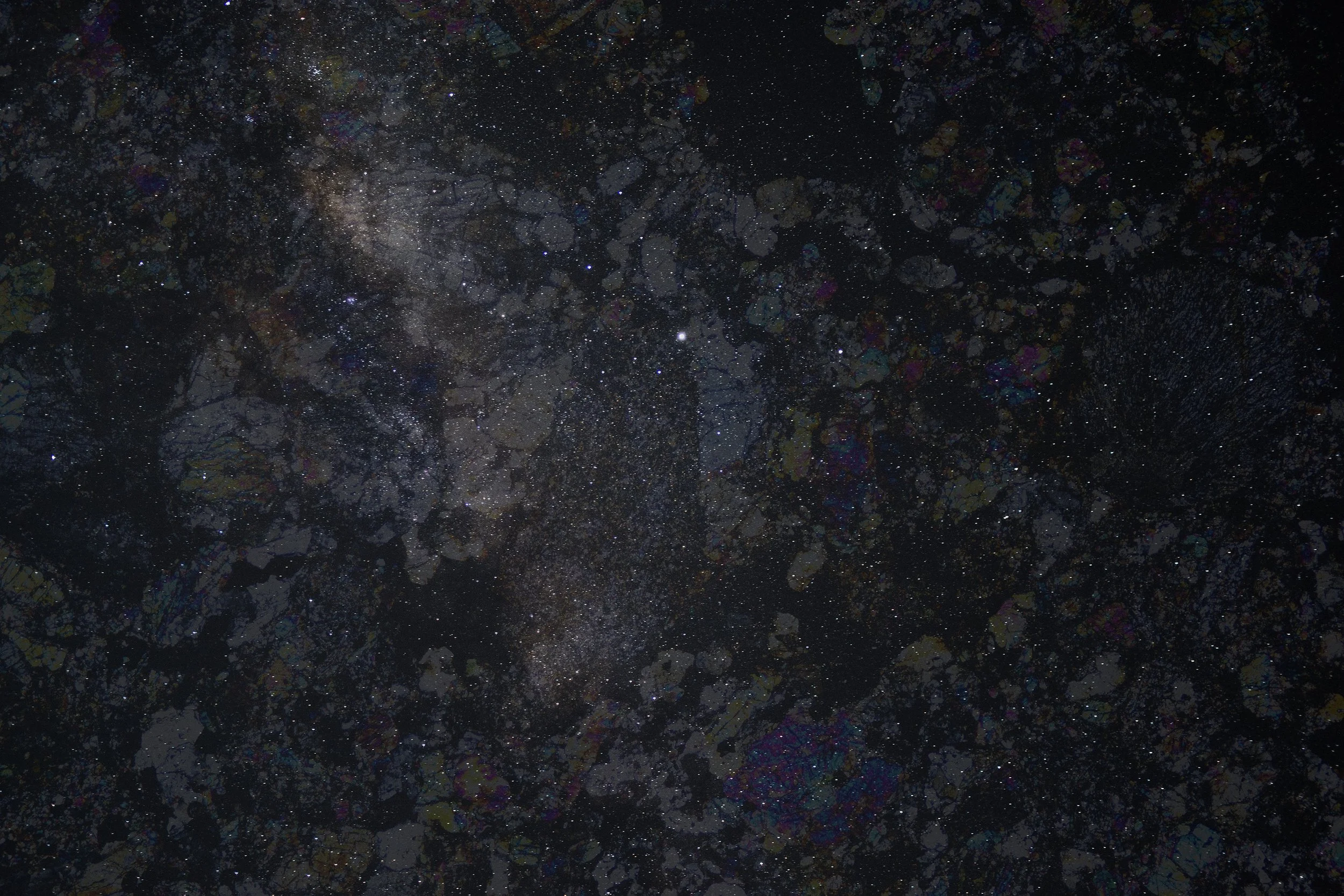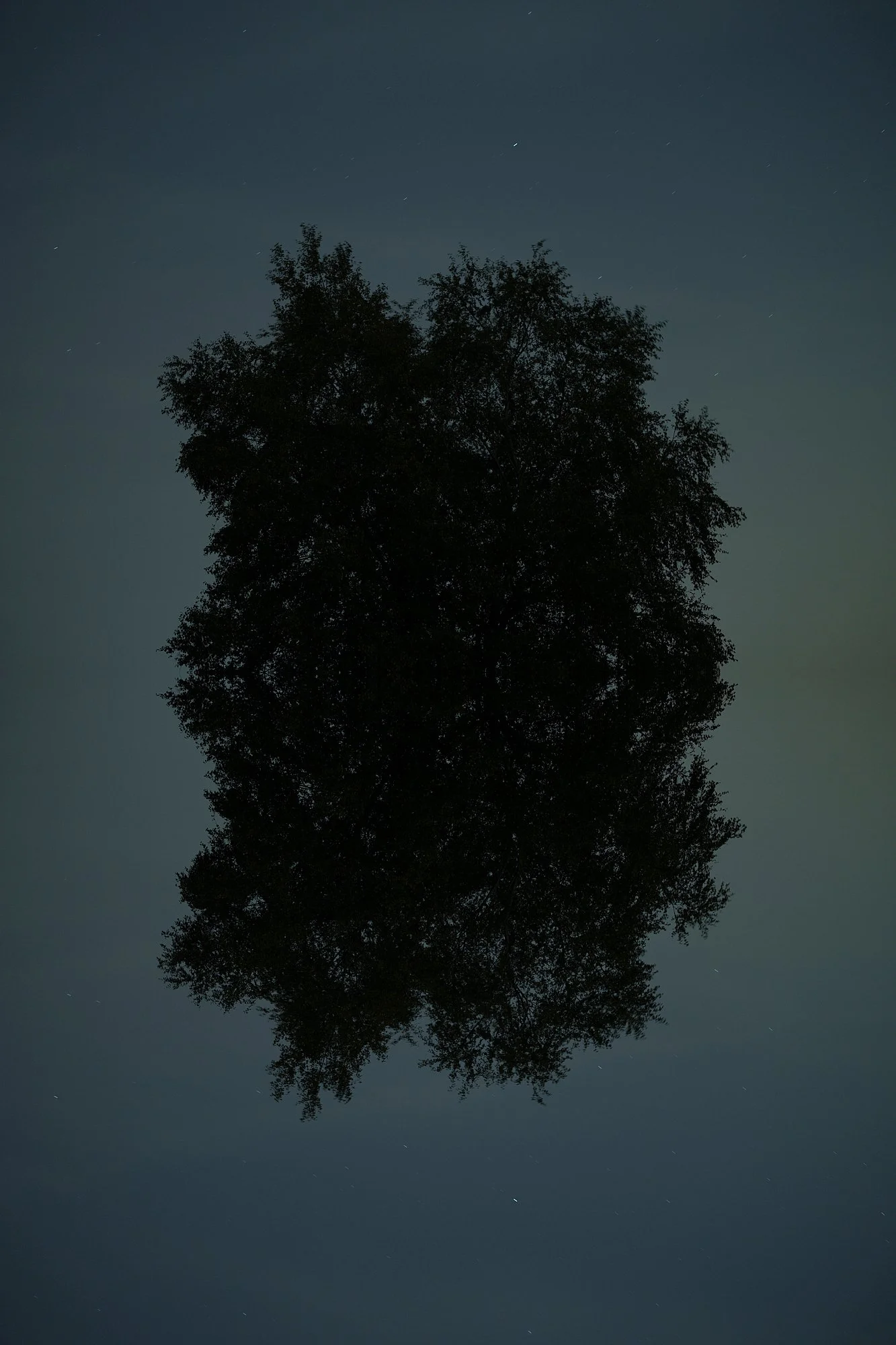Earth, a Cosmic Spectacle
A multifaceted project, exploring the philosophical reflections of the climate crisis, from those who have a relationship with astronomical time periods and deep time in collaboration with myself. Through engagements with a broad range of scientists based at and connected to Tūhura Otago Museum, I explored the contrast between the long and slower development of life on Earth, since the Big Bang 13.8 billion years ago, and the rapid, accelerating changes created at the hands of humanity during the anthropocene.
16 August - 08 September
The Beautiful Science Gallery
Tūhura Otago Museum, Dunedin, Aotearoa New Zealand
This iteration of the project has been funded by a British Council Connections through Culture Grant. My body of photography was developed during my recent Launchpad Lab Residency in Southwest France. Debbie Meniru, Assistant Curator of Interpretation at Tate Modern and Tate Britain, wrote a reflective piece about my project which can be read here.
Photographic images
The elements of the photographic works in this exhibition have been taken in different locations in the UK and here in Aotearoa during different projects including during my GRAIN Projects residency with Forestry England in Cannock Chase, my recent residency in France with Launchpad Lab Projects and my Pale Blue Dot Collective residency at the Arts Centre Te Matatiki Toi Ora in Christchurch.
The intention behind the works is to bring together different temporalities. The first being the long and slow development of Earth as a planet, and consequently life on Earth, alongside the brief moment of an existence and the quickening effects of the climate crisis. Trees, with lifespans sometimes longer than our own, seem to metaphorically bridge the momentary nature of a life and the time beyond the bounds of our lifetimes.
The soundscape was recorded on frosty mornings in the garden of the home I am staying in Purakaunui. Listening through headphones and through microphones gives me the feeling of being witness to a secret world of animals to which I am not usually privy. Whilst looking out at the harbour as the sun rose above the landscape, I was reminded of how many millions of years the sun has lit up these hills and woken the birds from their slumber.
Thomas Halliday wrote in Otherlands, “The aggregations of species that produce a feeling of place also provide a sense of time”. (Halliday, 2022) Not only is it a challenge to think of how unique life on Earth is in all of the endless universe, but that our experience of it and what feels familiar is connected to this moment of Earth’s inconceivably long history, and future.
Letters from scientists
During my residency here at Tuhura I have been talking to all sorts of different scientists about life on Earth, the climate crisis, the deep history and future of our planet. These incredibly illuminating conversations really helped me to look at our changing world from a much longer geological, biological and astronomical perspective. I developed this project because I felt like scientists who have this knowledge of the long periods of time that has been required for life to develop, must feel hugely burdened by this knowledge in the face of the climate crisis. My aim within the project was to work with scientists of different cultural backgrounds to offer a wide range of perspectives.
After our conversations I gave each scientist an envelope with instructions and a blank card to fill in. The question they were asked was:
‘How does your knowledge of the scales of time and the ∼13.7 billion year concatenation of astronomical and Earth-based events required to create Earth and all its biodiversity, help to shape your understanding of the significance of the climate crisis?’
I wanted to give these scientists the opportunity to share how they feel about what they are seeing and what they understand, through a private letter - not attached to their name or research. I have loved reading their responses - and I hope that the audience does too. These particular scientists have such an insight into the makeup of our existence - and can offer a way for us to all have thoughts about it - as as with the night sky, the deep time history of our world, belongs to each of us as well.
Letters from students
After some conversation with one of the scientists, I understood that this was a great opportunity for the participating students to think about the wonder of Earth, instead of the changing climate.
They were also given an envelope with instructions and blank card - and were asked to write or draw their response.
What I asked them was to:
‘Look into the dark skies above you. Listen to the sounds of the environment all around you. Think about your place within Earth’s ecosystem and where Earth fits into the solar system and the galaxy. Think about the darkness around our Milky Way and the distance to the next galaxy.
Close your eyes and imagine seeing Earth from a great distance. Think about the colours and all the human and non-human life that has lived and lives within all of its environments. How would you describe Earth from this perspective?’
Installation at Tūhura Otago Museum






















































